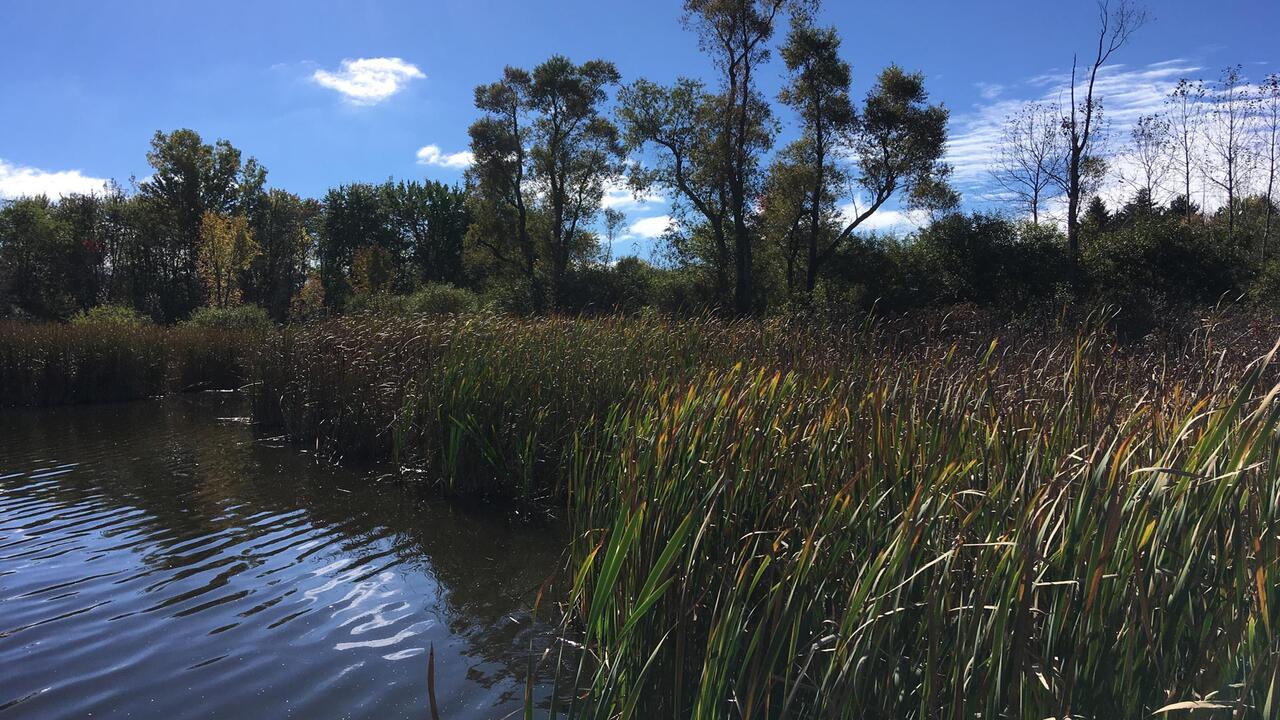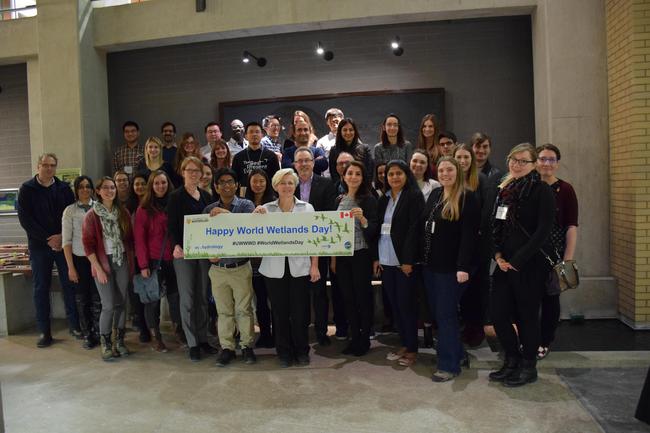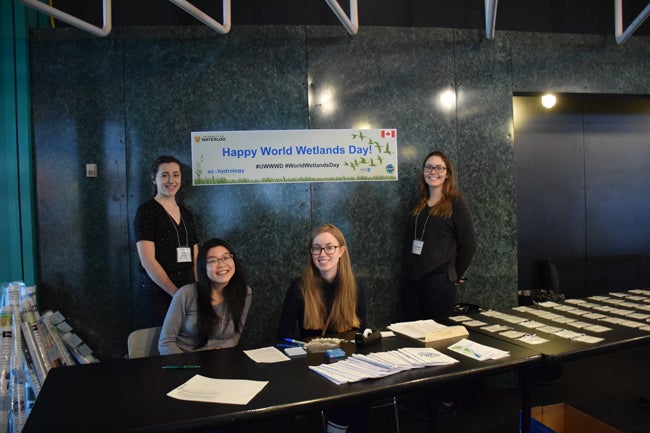
Sixth Annual World Wetlands Day Celebration at University of Waterloo
Why wetlands are worth celebrating

Why wetlands are worth celebrating
By Tatjana Milojevic Faculty of ScienceFriday, February 2 marked the Ecohydrology Research Group’s sixth annual World Wetlands Day (WWD) celebration at the University of Waterloo. This year’s program featured research presentations, three-minute student presentations, a student poster competition, and an evening public lecture. The symposium had over 90 registrants and was attended by researchers from various universities across southwestern Ontario as well as members of the general public. It even got a Twitter-nod from MP of Waterloo Bardish Chagger.
“Wetlands are a critical part of our ecosystem that improve water quality, reduce flooding impacts, and absorb pollutants,” tweeted Chagger. “We need to recognize how our actions impact the environment, and work to keep urban wetlands to ensure a clean and safe future.”

Attendees at the World Wetlands Day Poster Contest
Wetlands cover 14 per cent of Canada’s land area, but many are experiencing increasing stress due to climate change. Much of the original wetlands have been altered by changing land use practices (e.g. agriculture and urbanization). Despite the abundance of wetlands in Canada, the number of celebrations of WWD remain surprisingly low. Including the Waterloo celebration, only four celebrations were registered for Canada in 2018.
“Given Canada’s comparative wealth of wetland resources, it is surprising that there are so few World Wetlands Day celebrations,” said Dr. Phillipe Van Cappellen, Canada Excellence Research Chair in Ecohydrology and founder of the Ecohydrology Research Group. “The lack of World Wetlands Day participation is really a missed opportunity for academics to share their knowledge with the general public.”

Fun at the wetlands photo booth
Highlighting the evening was Dr. Jennifer Read, Director of the University of Michigan Water Center, who gave a public lecture titled “Impactful Science Along our Coasts: Supporting and assessing user-focused research in our estuaries, coastal wetlands and Great Lakes”. Dr. Read’s talk emphasized the importance of maintaining engagement with the end-users of scientific research throughout the research process.
The importance of wetlands has been recognized internationally, which resulted in the signing of the Convention on Wetlands (otherwise known as the Ramsar Convention) on February 2, 1971 in Ramsar, Iran. The intergovernmental treaty, which Canada joined in 1981, provides the framework to guide efforts for wetland conservation and sustainable use of wetland resources.
“Wetlands are vital to humans and the environment, providing key ecosystem services. Awareness of their importance is critical to conservation efforts,” said Dr. Phillipe Van Cappellen.

Ecohydrology co-op students helping with WWD symposium
Indeed, wetlands provide valuable ecosystem services worth protecting. For instance, they act as buffers during extreme hydrologic events such as floods, filter sediments and harmful substances, provide natural resources (e.g. wood, peat, and wildfowl), and offer recreational opportunities such a birdwatching.
Whether it is intergovernmental cooperation, engagement of end-users in scientific research, or public participation in local WWD events, it is clear that the most effective conservation of wetlands cannot be done in isolation, but requires active support from all of us.
If you are interested in participating or assisting in the organization of a future World Wetlands Day event, please contact the Ecohydrology Research Group.

Read more
Here are the people and events behind some of this year’s most compelling Waterloo stories

Read more
It Started in Waterloo: An Astronaut's Journey into the Universe of Innovation, narrated by Chris Hadfield, highlights the University of Waterloo’s role in igniting innovation within the region and beyond.

Read more
Researchers awarded funding to investigate ecology, climate change, repatriation, health and well-being through cultural and historical lens
The University of Waterloo acknowledges that much of our work takes place on the traditional territory of the Neutral, Anishinaabeg, and Haudenosaunee peoples. Our main campus is situated on the Haldimand Tract, the land granted to the Six Nations that includes six miles on each side of the Grand River. Our active work toward reconciliation takes place across our campuses through research, learning, teaching, and community building, and is co-ordinated within the Office of Indigenous Relations.